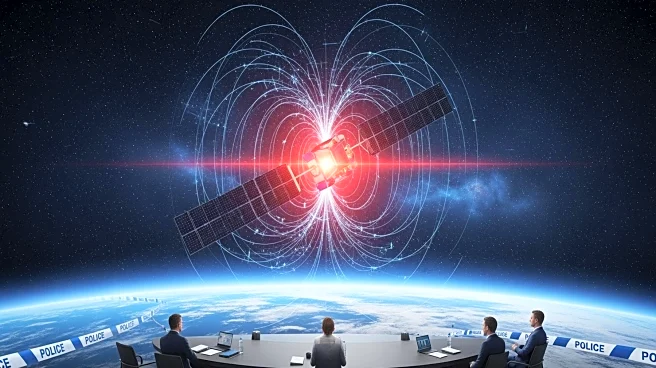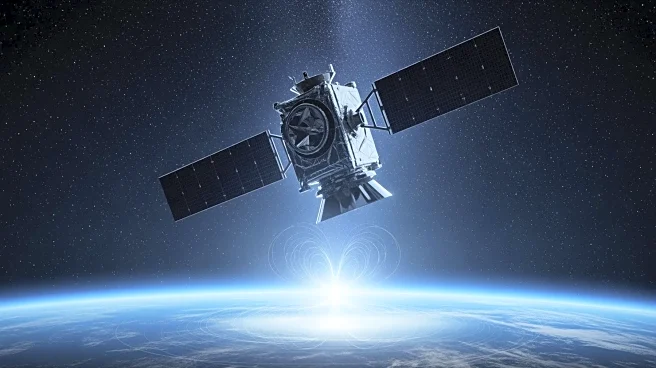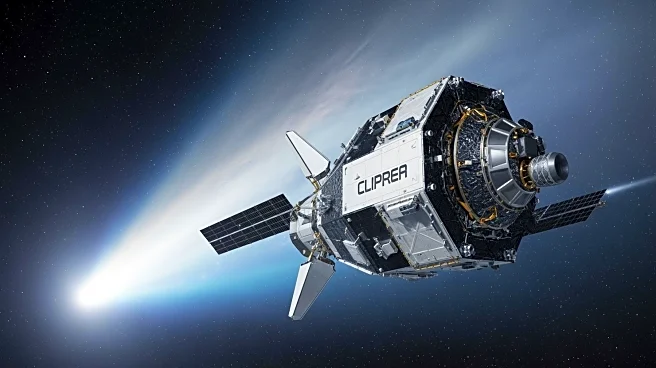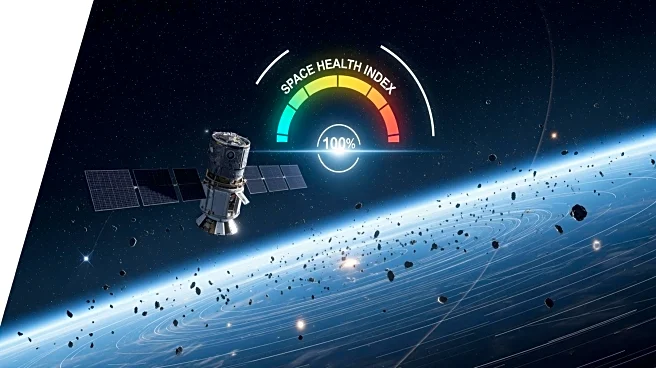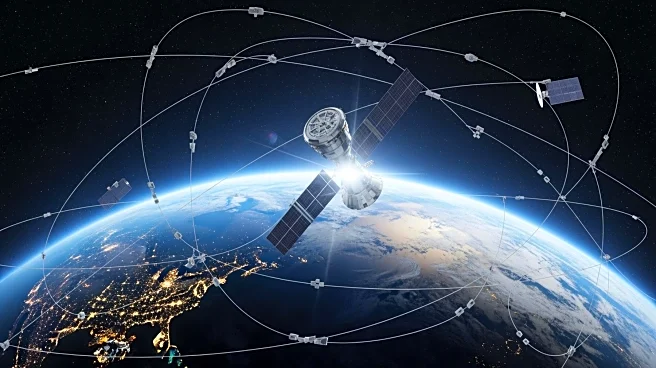What's Happening?
The European Space Agency (ESA) has been studying the Earth's magnetic field for 11 years through its Swarm operation, focusing on the South Atlantic Anomaly (SAA), a weak spot in the magnetic field over
South America. This anomaly, first discovered in 1958, has been expanding across the Atlantic Ocean towards Africa. The ESA attributes this growth to unusual behaviors at the boundary between the Earth's liquid outer core and the rocky mantle, known as reverse flux patches. These patches are causing the magnetic field to weaken in specific areas, notably beneath the SAA. The Swarm mission has also observed changes in other parts of the magnetic field, with a weakening over Canada and strengthening over Siberia.
Why It's Important?
The expansion of the South Atlantic Anomaly poses significant risks to satellites and spacecraft operating in low Earth orbit. As these vehicles pass through the region, they are exposed to higher levels of radiation, which can lead to malfunctions, damage to critical hardware, and even blackouts. This situation necessitates that space agencies consider the SAA when designing new spacecraft and satellites to mitigate potential damage. The ongoing changes in the Earth's magnetic field, while not affecting daily human life, are crucial for the aerospace industry, as they influence the design and operation of space technology.
What's Next?
The ESA plans to continue its Swarm mission to gather more data on the Earth's magnetic field, with hopes of extending the mission beyond 2030. This extended timeline will allow for further insights, especially during the solar minimum, which could provide unprecedented data on the planet's magnetic dynamics. Space agencies will likely continue to adapt their technology to account for the growing SAA, ensuring the resilience of future space missions.
Beyond the Headlines
The changes in the Earth's magnetic field, particularly the expansion of the SAA, highlight the dynamic nature of our planet's core processes. These developments underscore the importance of continuous monitoring and research to understand the long-term implications for both natural phenomena and human technological endeavors. The findings from the Swarm mission could also contribute to broader scientific knowledge about geomagnetic processes and their impact on global systems.
